Sailing for beginners, or for dummies
Description
Greetings sailors,
Today we are going to see what are the fundamental techniques and tricks that I use to go sailing alone with confidence.
This post is a bit different from the previous ones, and without pretending to be an expert in the field, we are going to see a small solo navigation guide for beginners, or for dummies …
The best of this post will be in the attached video, but for regular readers, I will try to capture, also here, the basic points to dare to our first solo navigations.
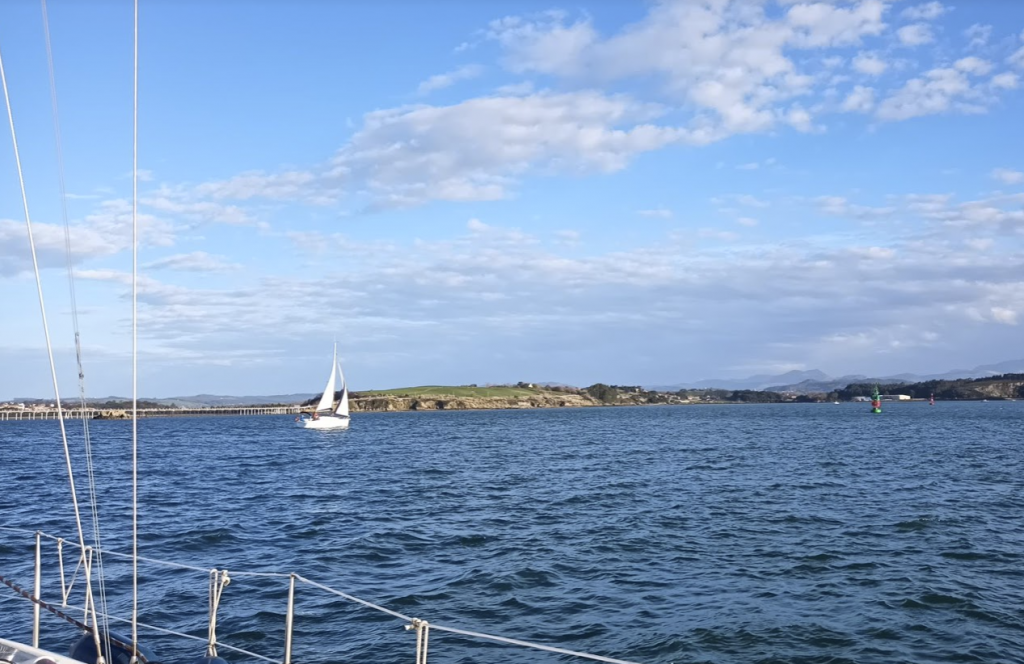
I already tell you that it is a beginner’s guide for other beginners. A guide for when, whether with a motorboat or a sailing boat, you face the first solo navigations. Maybe because I still have it very recent and I know what it took me a while to gain the confidence for it.
Why sail solo
Each one may have their reasons for wanting to get into solo sailing, it is no longer a matter of not having friends to sail wit .. If not the pleasure and enjoyment of facing the elements alone.
Handling boats of a certain size, feeling capable and being able to improvise sailing days without any advance notice .. Those are part of the advantages of sailing alone ..
But without a doubt the most important thing is the pleasure of sailing itself, the connection with your boat and the absolute peace of being in your boat, alone, moving by the force of the wind or the motor …
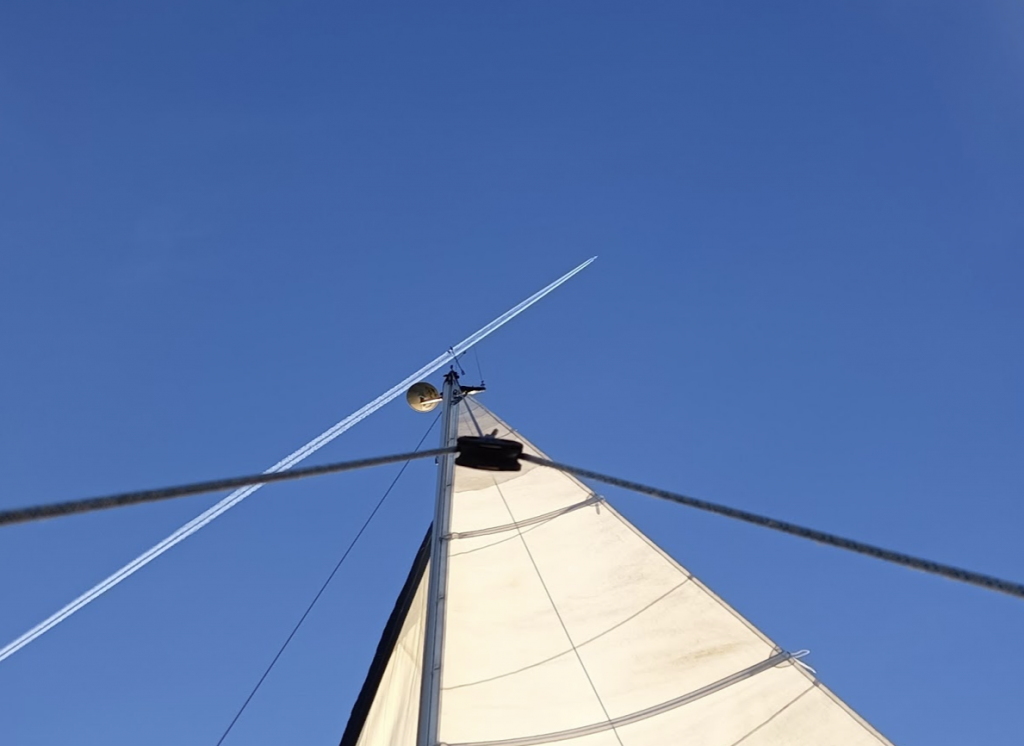
The best of all is that, having the ability to be able to handle your boat alone, will also allow you to enjoy calmly even with a crew and will greatly increase the connection and knowledge you have of your own boat, and possibly of yourself ..
The challenges
I suppose that everyone will have their fears and their challenges when sailing alone, whether on a sailboat or in a motorboat..
For me, more than the navigation itself, my fears have always been more about the departure and especially the docking at the port. Mooring alone in any weather circumstance has always been what has worried me the most and the barrier that is most difficult for me to pass.
When navigating, I see it easier, because in the end, it up to you if you decide to go out only by motor, or take only the mainsail and save work on the tacks or only the genoa, or you take out the full sails … the circumstances and your confidence will allow you to do the right choose… but the first step is to dare to go out alone.
I suppose that also the challenge of sailing will depend on the size of the boat. Me, with my 32 footer, can sail alone with confidence, especially when the real wind does not exceed 20 knots.. But I usually choose calm and beautiful days for solo sailing..
Preparation
Confidence usually comes from preparation, and this is undoubtedly a key point. As I already mentioned, my biggest fears have always been around entering and leaving the port.
My boat is a simple and noble boat, which in navigation is easy to carry.
It is rigged in a simple way and I only have a furling genoa and mainsail .. Which limits the difficulty of navigation.
In return, if it is powered by the engine, since it has a small engine, with a fixed propeller, without any type of bow thruster, and a single rudder blade … it not very manageable in reverse gear.
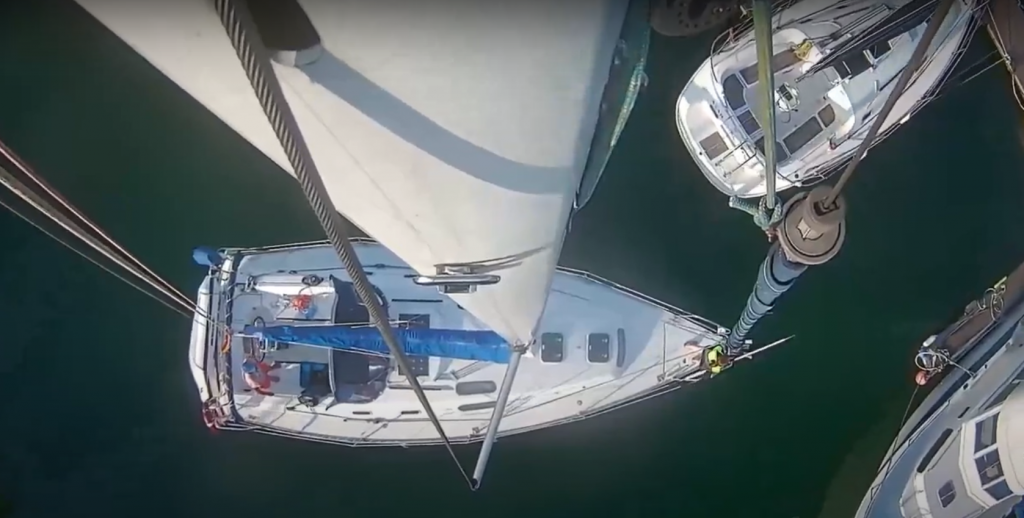
Counting on that, then one adapts. The first thing is that I normally dock with the bow to the dock. That guarantees me that I have maximum maneuverability when returning to the port, since if the circumstances are ugly, a lot of crosswind for example, I can simply decide not to leave. But another thing is when you have left with a great day, and things get very ugly … in that case you will want to dock and you will need to make it as easy as possible to do so.
Have the moorings well placed, good fenders that will help you when entering and leaving (in fact, with good fenders it will always be good to have boats on the sides when docking to box the boat well). And some good dock fenders, or rather many … I have a good one to stop the bow and the rest, a lot of them made with Chinese pool noodles …
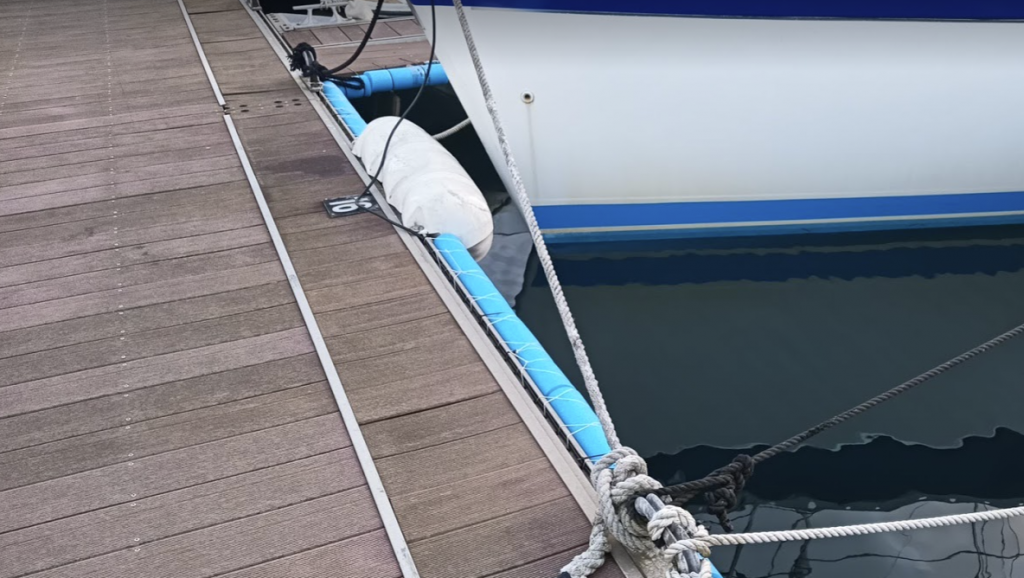
The rest, the basics. I always sail with a life vest when I am alone, in protected waters with a decathlon´s one that is a warm vest, but that also gives flotation, and in open waters with a self-inflating one with built-in harness.
In traffic areas, radio is essential. I, apart from the relevant fixed and homologated one, have a very cheap and versatile Chinese one that I always have on.
As it allows us to listen to two channels at the same time, I always choose 16 and 11, which is the traffic control channel in my area, thus I anticipate the entrances and exits of large ships. The truth is that I am very happy with it, and I bought it on Aliexpress for 35 $, although you can also find it on Amazon for about 50 $. I recommend you take the cable to connect it to the computer and thus be able to load the channels you want comfortably.
Additionally, all information you have will be good for you, the plotter, if you have an AIS system, whether it is commercial or homemade like mine (With a Raspberry Pi and a TV tuner), they will allow you to anticipate the situations and traffic .. which is the key to navigating with confidence .. Anticipating what is going to happen.
Sailing
When I go sailing, I already have a well-orchestrated routine, which I will describe for you, but which you will undoubtedly follow better in the video:
The first thing I do is remove the covers, disconnect the power cable from the dock and start the engine, so I give it time to warm up a bit and also to check that everything works well.
Then I prepare the tablet and the radio in its support, and from the tablet itself, I turn on the instruments, the sounder and the bow camera.
I leave the boat hook at hand and release all the lines that are not working (depending on where the wind is coming from).
With everything already prepared, it was time to release the last moorings, I used to do it in a hurry, so that the ship would not drift, and left immediately
But I learned a great trick, which is to put the minimum gear forward without releasing the last moorings, the boat leans on the front fender, and with the rudder thrown to the opposite side of the finger, I make the side stay close to the finger, supported on the defenses..

From there I can release the rest of the moorings with complete peace of mind and the boat does not move from its place.
Finally it is time to set sail … I change forward gear for reverse gear, I change the rudder to the other side to compensate for the propeller rotation displacement and with the boat hook I keep an eye on not hitting anyone …
The more wind it gets (from the side, which is the one that bothers), the faster I get out .. because the bow will tend to fall downwind and it will be very difficult to fight against it .. so it is best to leave it to drift and based on where it blows, then walk the corridor in reverse, which in my case is usually the most common, or go forward.
Going from reverse to forward is something very easy and can be done with a lot of control, but going from forward to reverse is usually more tricky for me .. Since the stern resists me a little more .. like this I usually choose the maneuvers in which both the boat and I are most comfortable.
Out of the port and in a clear place, with the autopilot, I get against the wind with little speed and take the opportunity to remove the topping lift (I have the mania of tying it to the mast, I do not like to simply loosen it and let it hit the mainsail) , I open the cover of the main, I place the halyard in the halyard cuff, (all this can be also done before, at the dock) and I raise the main from the cockpit (it gives me more security than doing it from the mast, being alone).
By hand as much as I can, avoiding that it is rolled up with the lazy bag, and with the winch the last section.
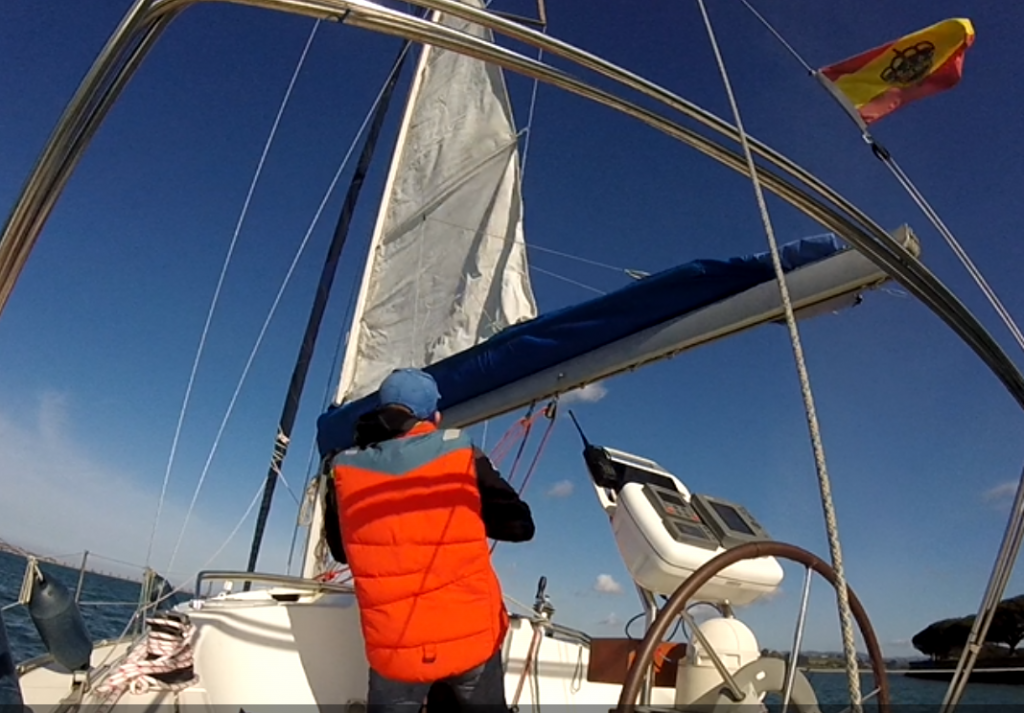
I put down the halyard and leave it ready in case the emergency mainsail has to be lowered.
I set the mainsail appropriate, set course, de-gear the engine, started sailing with the mainsail and, if everything went well, I stopped the engine. And the desired silence arrives …
By now I have usually stopped the autopilot and am holding the rudder by hand ..
If it’s very windy or I’m very lazy, then continue sailing with the mainsail only happily, if not, the usual, I bear of a little and unroll the genoa.
I unwind it in a controlled way … I do not let it come out on its own at once, since the line can end up bundled in the furler, and then it is almost impossible to rewind it and not being able to collect the sails when you return can be a real problem … Especially alone.
And with this I am already sailing happily.
The maneuvers are the ones that will give you the most work, but the autopilot (if you have it) will make your life easier and you will soon realize that you can also do it without it …
For the tacking, I leave the crank on the winch from which I will have to haul in and the sheet with two or three turns already prepared and with a bit of tension ready … and on the other winch, I unlock it and bring me the sheet up to the rudder, holding it by hand (with a tiller it will be similar).
I grabbed the sheet of the other band with the other hand (without tension) and turned the wheel enough so that the tack is not too fast.
When the genoa starts to load from the opposite side, I remove all the turns at full speed of the winch and hand-hunt the new sheet as much as I can, making sure that the sheet that I have released does not lock. Before going to pull with the winch, I correct the course a little, I almost put the rod on the track in the correct direction, and now, with a little more calm I finish pulling the genoa whatever is necessary (until almost the shroud upwind).
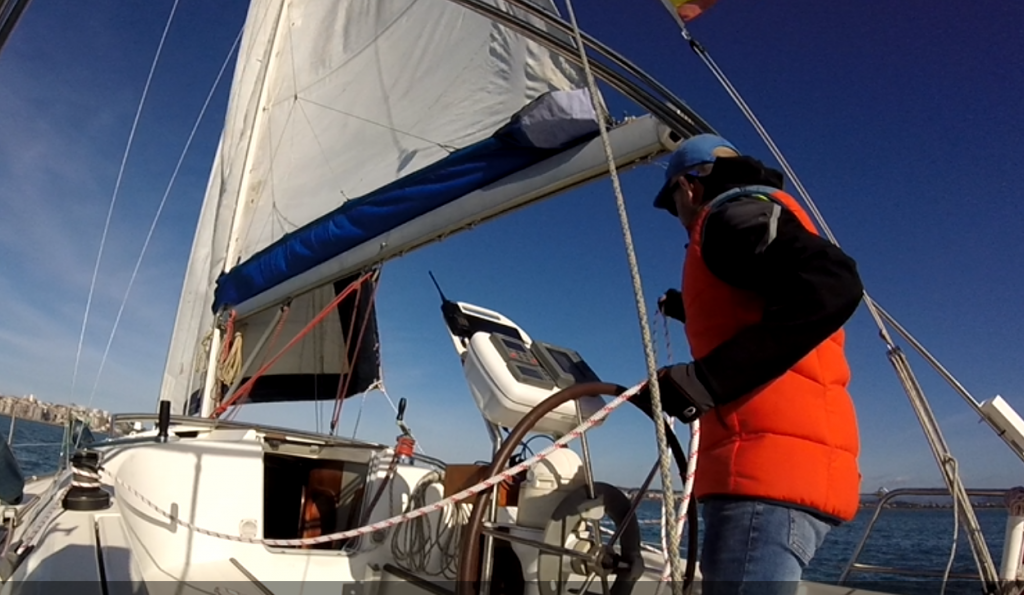
So tack after tack…
In the lower courses, everything is calmer … easier to carry the boat, less tension, and when you have to make a run … since I don’t have any spinaker or genaker, i sail wing and wing, which require a lot of finesse to the rudder, especially if there is little wind.
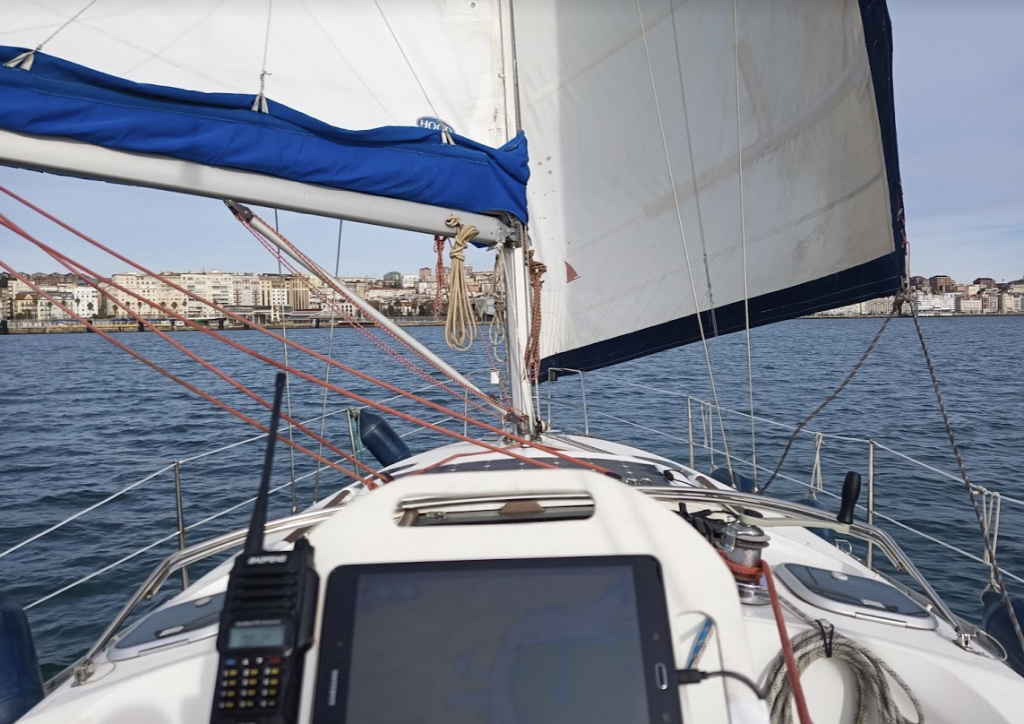
Finally, before reaching port, roll up the genoa.
Start the engine and line up the wind again to bow and store the mainsail … and I am already heading for the harbor entrance with the automatic pilot while I drew ropes, close covers and lowered the fenders …
I prepare the boat hook, and at a low speed I walk down the hall to my dock.
Upon arrival, the engine to the minimum to have maneuver (which with strong wind can mean a bit of speed) … and taking into account the inertia of the turn that you are going to give and from where the wind blows, as I walk the last meters of the corridor and I turn closer to the next boat or closer to my finger … always remembering that the boat turns on the daggerboard, that is to say that any correction will move the bow and stern to opposite sides ..
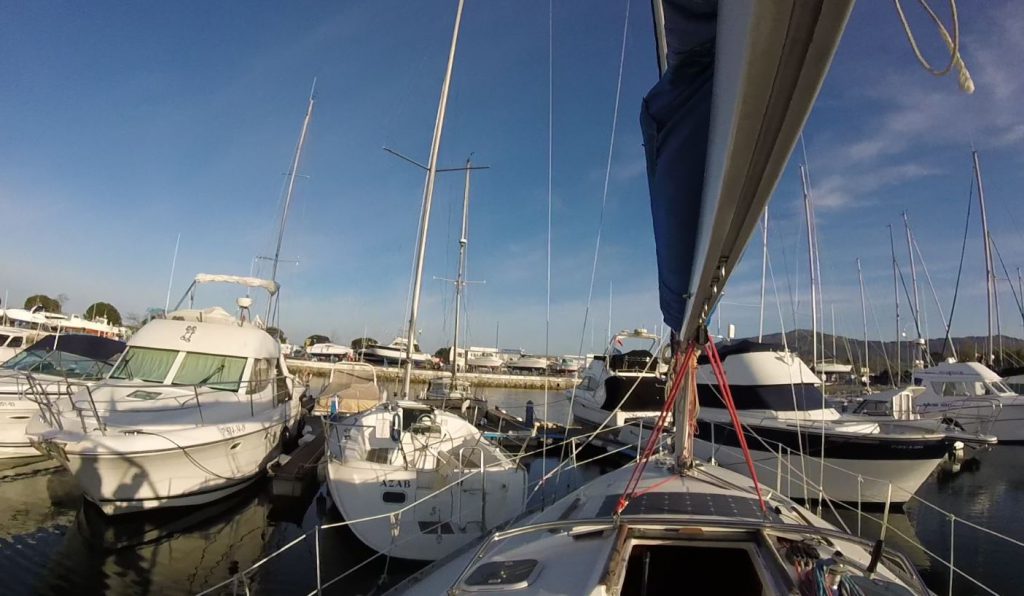
When the boat is already inside and before hitting the bow fender. a good push of reverse on the engine to remove practically all the movement .. and go to the bow with the boat hook to take the mooring of the bow that corresponds so that the boat does not leave its place .. Since the only exit is backwards. , that the finger and the fenders will not let him go to one side and the ship next door will not let him go to the other either.
With a lot of wind, you can even force the bow fender support as I do to go out and the boat will stay attached, thanks to the mini forward gear and the bow fender support.
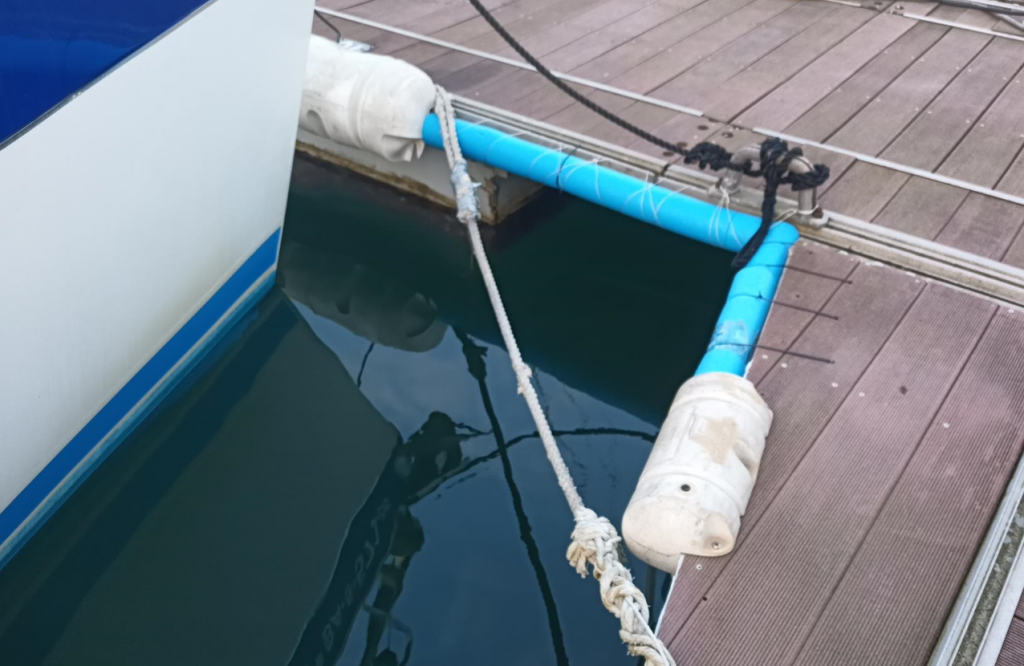
Already with a long catch, or even with the hook attached (I have a strategically placed rope to redirect the bow towards the defense .. I’m calm now .. I tied the other length of the bow, the side and the rest of the moorings, helping me a little with the engine to tighten some of them ..
And voila .. you can pick up and go home to see the video of The low cost Sailor on youtube.
Conclusions
Well, I know that all the things to do on a sailing boat can be a bit overwhelming at first .. But it’s all a matter of planning and calm.
Anticipate situations and be prepared for them. The most scary thing is the docking maneuvers and it’s all a matter of practicing a lot, getting to know your boat … and protecting yourself as much as you can.
There, a piece of advice, which is worth a lot to me in kitesurfing and which I try to apply on the boat .. It is that the wind is much stronger than you .. that you can face it for a while, but it will come out winning, So you better use him to your advantage .. If you know the bow is going to drift, then you can count on it and try to use it to your advantage .. Because the fight to try to defeat him with little speed is going to be very hard.
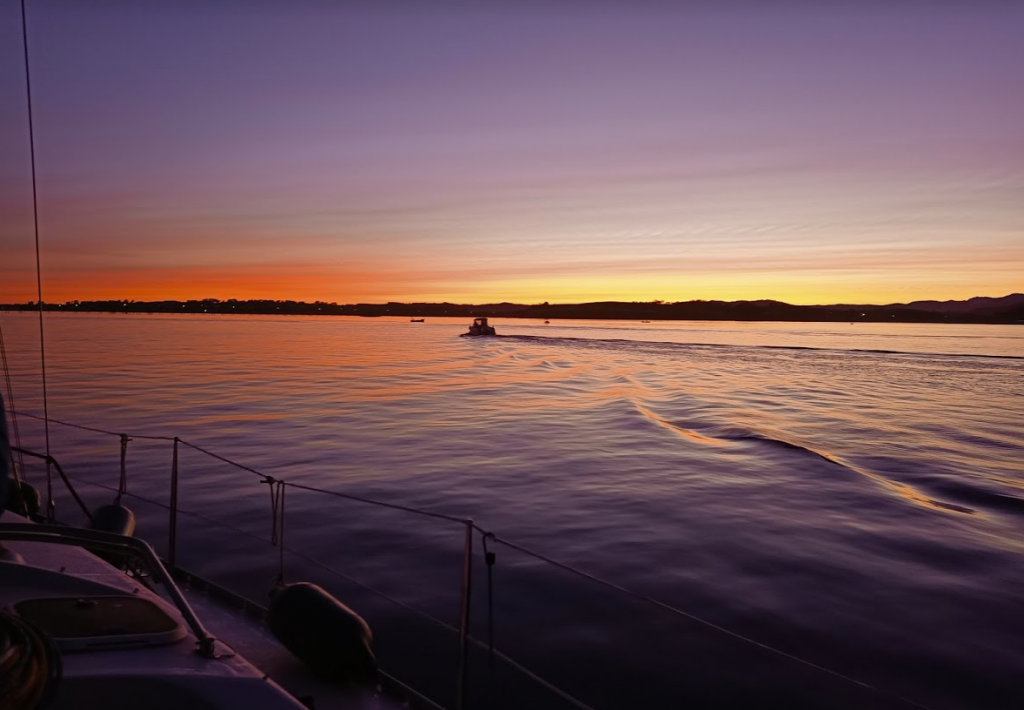
Without further ado, we encourage you to start trying and enjoying some days of sailing alone, without ceasing to enjoy your boat with friends, of course, that the social life of the sea is also very important and entertaining.

